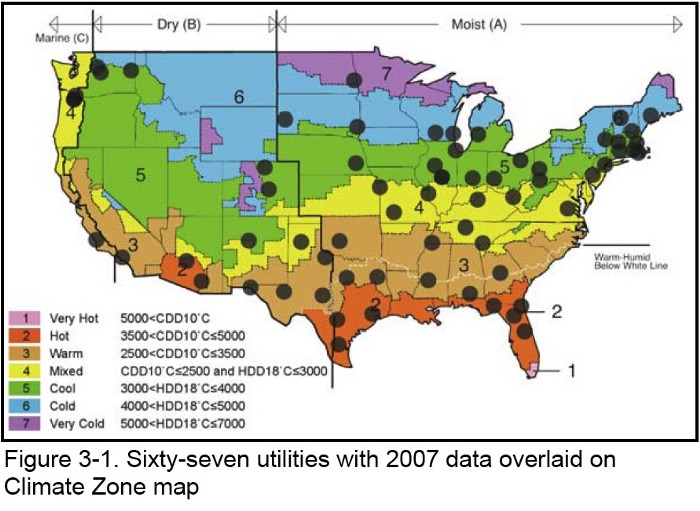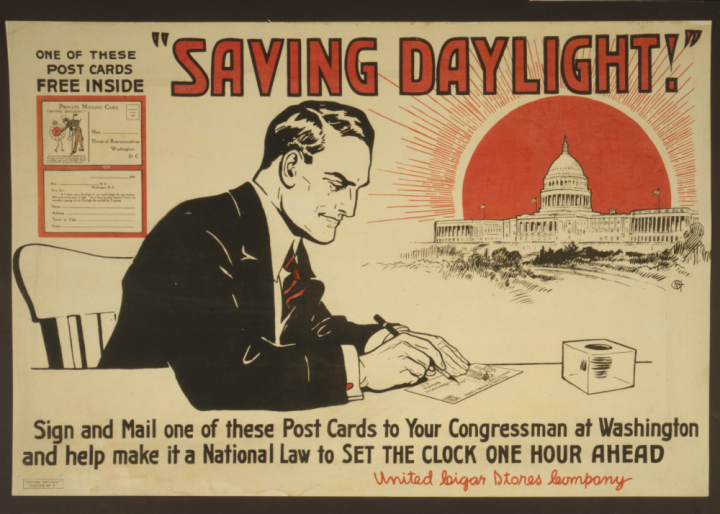We are moving the clocks forward this Sunday. But how and why did the practice of daylight savings time come to be?

The following written content from Shawn Goggins
Get ready to lose an hour this Sunday. The clocks roll forward on Sunday at 2 a.m. due to Daylight savings time.
2022 actually marks the 104rd year of daylight savings time. It’s annual eight month run was first enacted by the federal government March 19, 1918, during World War I, as a way to conserve coal. However, it was nixed later that year but it persisted in some form at local or state levels for 48 years before being officially recognized again nationally in 1966 by the Uniform Time Act.
The U.S. Department of Transportation oversees daylight saving time and all time zones in the U.S. The U.S. Department of Transportation says daylight savings time is important to many modes of transportation.
The following are reasons for Daylight Savings Time according to the DOT website:
• It saves energy. During Daylight Saving Time, the sun sets one hour later in the evenings, so the need to use electricity for household lighting and appliances is reduced. People tend to spend more time outside in the evenings during Daylight Saving Time, which reduces the need to use electricity in the home. Also, because the sunrise is very early in the morning during the summer months, most people will awake after the sun has already risen, which means they turn on fewer lights in their homes.

• It saves lives and prevents traffic injuries. During Daylight Saving Time, more people travel to and from school and work and complete errands during the daylight.
• It reduces crime. During Daylight Saving Time, more people are out conducting their affairs during the daylight rather than at night, when more crime occurs.
Opinions about Daylight Savings Time differ state-by-state. Hawaii and Arizona do not take part in daylight savings time mostly because the two get ample sunlight. Read more from Fibreone
History of Daylight Saving Time
The following written content from Bill Petro
It seems like only yesterday that we discussed the end of Daylight Saving Time, or DST, a brilliant campaign to convince people that we’re getting more daylight each day when in reality, we’ve simply changed our clocks and then forgotten about it within two weeks. Actually, it was only back in November, or four months ago.
Recent Changes in Daylight Saving Time
Indeed, the new rules for DST that began in 2007 meant an extra four or five weeks of DST each year. There are now a total of 238 days of DST, compared to a total of 210 days of DST back in 2006 under the previous rules. This means the U. S. remains on DST for about 65% of the year. So if you think about it, DST will be in effect for most of the year, Standard time is no longer the standard. It might be more significant to recognize Daylight Losing Time.
Starting Daylight Saving Time
DST begins each year at 2:00 a.m. on the second Sunday in March in most of the United States and its territories. However, some places have not bought into this campaign. It is not observed in Hawaii, American Samoa, Guam, Puerto Rico, the Virgin Islands, nor in the state of Arizona — except for the Navajo Indian Reservation — which does observe DST.
Now: an answer to the age-old question
“Does DST actually save energy?”
Daylight Saving Time Energy Savings?
A Department of Energy study was released in early November 2008, showing that Daylight Saving Time does, in fact, save energy.

The total electricity savings of Extended Daylight Saving Time were about 1.3 Tera Watt-hour (TWh). This corresponds to 0.5 percent per day of Extended Daylight Saving Time or 0.03 percent of electricity consumption over the year. In comparison, the total 2007 electricity consumption in the United States was 3,900 TWh.
In terms of national primary energy consumption, the electricity savings translate to a reduction of 17 Trillion Btu (TBtu) over the spring and fall Extended Daylight Saving Time periods or roughly 0.02 percent of total U.S. energy consumption during 2007 of 101,000 TBtu. Read more from medium





